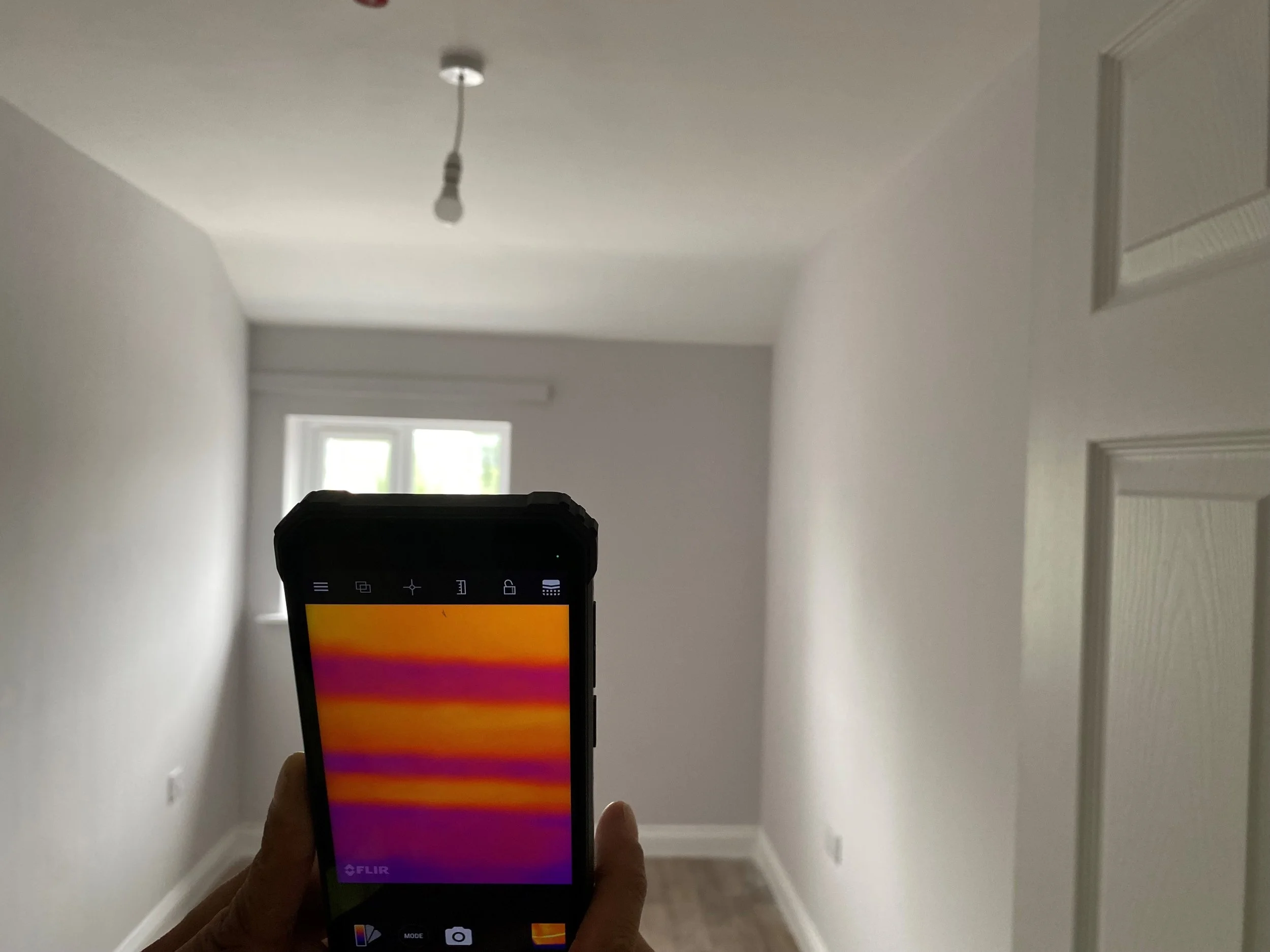
NexGen Infrared Ceiling Paper
A simple, invisible heating system
NexGen paper is a unique and highly innovative solution for delivering efficient, low-carbon heating. It’s based on many years of research, development and testing, and it forms the core of the range of products that NexGen offers.
The paper itself, which is a fraction of a millimeter thick, is fire rated and water-resistant. At each end, it has electrical connectors which are hidden from view after installation. Once installed, it’s invisible, and you wouldn’t know it was there – apart from the nice warm feeling when you enter the room…
Designing a layout
Each room is surveyed before installation, and a layout for each room, specifying the size of each sheet of paper, is created. A layout can be designed for almost any shape of room, the paper is cut onsite to ensure the best fit.
NexGen paper is very robust: holes can be cut in the paper to cater for light fittings, smoke detectors and other fixtures without affecting the performance of the product. It doesn’t tear easily, but can be cut on-site to fit corners and other unusual shapes.
Ultra-low voltage electricity for safety
Each group of tiles is wired into an ultra-low voltage electricity supply (24 volts). The lightweight cables run from each sheet to a low-voltage transformer which can either be hidden in the ceiling void above the suspended grid, or in a nearby cupboard. The transformers are powered by a standard 120v supply.
We use low voltage power for two reasons: First, it’s much safer – even if you manage to cut the paper and short-circuit the power supply, an electric shock would not be not dangerous to human health. Second, a low voltage supply heats the tile very gently, so the surface temperature of the tile remains low – typically in the range of 104-122°F. This provides a gentle, comfortable warmth in the area under the tiles, and in the event that someone reaches up to touch the ceiling, there is no risk of fingers being burned.
An Invisible Finish
The ceiling is finished by filling any small cracks with standard decorator’s caulk, and painted. Wires are hidden from view either in coving or trunking, so the installation is effectively invisible. Any irregularities in the ceiling, be it a slope at one end or irregular room shape can easily be catered for in the installation.
NexGen installation can adjust to different ceiling structures and surfaces. Some ceilings are poorly insulated, so we use a version of the product which is combined with a layer of insulation. Artex ceilings provide a challenge from an adhesion and safety perspective, so an artex appropriate installation system is used in these cases.
The infrared experience
The whole of the room and all of the walls become usable space, and warmth is delivered evenly across the room. This infrared camera shows the individual sheets of NexGen warming up, each to a temperature of 104-122°F, and delivering infrared energy to the area below it.
Humans feel NexGen’s infrared directly – like feeling gentle sunshine on your skin – so NexGen doesn’t rely on heated air to feel warm. It’s comfortable with a lower air temperature – which means that we don’t use as much energy.
Highly efficient energy usage
Each room is a ‘zone’ which is controlled by a thermostat and/or smart app. Due to NexGen’s super-fast warmup time, it only takes a few minutes for humans to feel the warmth. There’s no need for a long (and inefficient) warm-up period. That means you can turn off the heating all day if you’re out of the house and be confident your feel warm quickly once under the infrared heating system. It’s much more efficient, lowering bills and CO2 emissions. Only heat it when you need it!






